
Construction
Automotive
Industry
www.rehau.com
MUNICIPEX
®
WATER SERVICE LINE
INSTALLATION GUIDE FOR PEXa PIPE
MEETING STANDARD ANSI/AWWA C904

2
Table of Contents
1. Scope .................................................... 3
2. Understanding MUNICIPEX ....................................3
3. Handling MUNICIPEX on the Jobsite. . . . . . . . . . . . . . . . . . . . . . . . . . . . . 8
4. Preparing the Trench ........................................8
5. Making Connections . . . . . . . . . . . . . . . . . . . . . . . . . . . . . . . . . . . . . . . . . 9
6. Placing MUNICIPEX. . . . . . . . . . . . . . . . . . . . . . . . . . . . . . . . . . . . . . . . . 11
7. Backlling Trench . . . . . . . . . . . . . . . . . . . . . . . . . . . . . . . . . . . . . . . . . . 13
8. Installing MUNICIPEX Using Horizontal Direction Drilling . . . . . . . . . . . . 13
9. Working With Installed MUNICIPEX . . . . . . . . . . . . . . . . . . . . . . . . . . . . . 14
Appendix A: Connecting MUNICIPEX to Compression Joint Brass . . . . . . . . 15
This symbol and the signal words DANGER, WARNING or CAUTION alert
you to personal injury hazards. If you don’t follow the safety messages:
– DANGER! You will be killed or seriously injured
– WARNING! You can be killed or seriously injured
– CAUTION! You can be injured
The signal word NOTICE is used to help you avoid property damage.
We cannot warn of all hazards; you must also use your own good judge-
ment.
For updates to this publication and the most current technical instructions, safety
information and manufacturer’s recommendations, visit
na.rehau.com/resourcecenter

3
1. SCOPE
This technical information applies to the selection, installation and maintenance of
MUNICIPEX water service line.
This guide gives technical information about MUNICIPEX pipe to speciers who
are selecting the appropriate piping material for new or replacement service line
installations.
This guide gives direction to appropriately licensed installers who have a working
knowledge of federal, state/provincial and local regulations. Persons using this
guide must have an understanding of the principles and practices for installation
of underground plastic piping systems.
This guide gives technical information about MUNICIPEX pipe to utility managers
who are responsible to maintain or modify water service lines.
It is the responsibility of the designer, the specier and the installer to check the
prevailing local codes and to verify that the technical information provided within
this guide is appropriate for a particular installation.
2. UNDERSTANDING MUNICIPEX
MUNICIPEX is REHAU’s trade name for our specially formulated crosslinked polyeth-
ylene pipe, also referred to as PEXa pipe. REHAU manufactures MUNICIPEX in a
state-of-the-art North American plant using a high-pressure peroxide extrusion
method, which enhances temperature and pressure capabilities, as well as long-
term strength.
The high degree of crosslinking in the REHAU PEXa process results in a durable, yet
exible, pipe with enhanced temperature and pressure capabilities, including long-
term hydrostatic strength and improved resistance to slow crack growth.
The capabilities of MUNICIPEX pipe make it superior for water service applications.
Refer to AWWA Committee Report Design and Installation of Crosslinked Polyethyl-
ene (PEX) Pipe Made in Accordance With AWWA C904 for additional information on
design and installation of PEX service lines.
Fig. 1: MUNICIPEX pipe

4
2.1 Industry Standards
MUNICIPEX pipe meets or exceeds the following industry standards:
− Manufactured to SDR9 copper tube sizes (CTS) according to ASTM F876,
AWWA C904 and CSA B137.5
− Certied to AWWA C904 Crosslinked Polyethylene (PEX) Pressure Pipe, 1/2 in.
(13 mm) Through 3 in. (76 mm), for Water Service
– Certied to CSA B137.5 Crosslinked Polyethylene (PEX) Tubing for Pressure
Applications
– Certied to NSF/ANSI Standards 14 and 61 (NSF-pw-g) for potable water ap-
plications
– Certied to PPI TR-3 Category 3306 for long-term hydrostatic strength, chlorine
and UV resistance
– Tested in accordance with ASTM F2023 for chlorine resistance
– Tested in accordance with ASTM F2657 for UV resistance; provides superior UV
resistance
2.2 Pressure Ratings
MUNICIPEX is pressure-rated for continuous use at:
− 160 psi @ 73.4°F (1,100 kPa @ 23°C)
− 100 psi @ 180°F (690 kPa @ 82°C)
– 200 psi @ 73.4°F (1,380 kPa @ 23°C) based on a 0.63 design factor*
These temperature/pressure ratings are based on an extrapolated time-to-failure
prediction as dened in ASTM D2837, Standard Test Method for Obtaining
Hydrostatic Design Basis for Thermoplastic Pipe Materials. See PPI TR-3 for further
explanation of these continuous-use pressure ratings.
*See REHAU Technical Bulletin 239 (TB239) for clarication.
2.3 Corrosion Resistance
MUNICIPEX pipe is non-metallic. As a polymer pipe it resists corrosion in soil or ag-
gressive water conditions. PEX pipes have been tested extensively with aggressive
potable water conditions (pH as low as 6.5) and have been found to be resistant
to corrosion over decades of service. In addition, MUNICIPEX resists scaling and
internal deposits. The corrosion of metal ttings is dependent on the conditions of
the soil and water. Therefore, the appropriate tting material should be selected
based on environmental conditions and the application.
2.4 Erosion Resistance
PEX pipes have been tested with water velocities greater than 12 feet per second
(3.65 m/s) without erosional effect on the pipes. If ow velocities greater than
12 feet per second are necessary, contact REHAU for further information.
Fig. 2: Corrosion build-up in metal
pipes
Fig. 3: No internal deposits in PEXa
pipes

5
2.5 Chlorine Resistance
MUNICIPEX pipe has been proven through decades of use to be resistant to free
chlorine used in municipal drinking water distribution systems.
MUNICIPEX can be used for chlorinated potable water subject to the following
conditions:
– The pH of the water is 7.0 or higher
– The concentration of free chlorine is 4.0 parts per million (PPM) or lower
– Water temperature is 140°F (60°C) or lower
– Water pressure is 80 psi (550 kPa) or lower
Most municipal water distribution systems will use higher pressures and much
lower water temperatures. In these municipal applications, REHAU has not seen
chlorine-related failures of PEXa pipes. According to F2023 the extrapolated
time-to-failure of MUNICIPEX pipes at 73.4°F (23°C) far exceeds the requirements
within the standard. Please contact REHAU for further information on chlorine
resistance.
Additionally, according to Statement A from the Plastics Pipe Institute (PPI), PEX
pipes are also resistant to chloramines, which are found to be less aggressive to
PEX pipes than free chlorine. According to PPI Statement A, “…it is the position of
PPI BCD that chloramines are less aggressive than free chlorine to PEX pipes. Test-
ing of oxidative resistance using free chlorine, in accordance with ASTM F2023,
will provide a conservative estimate of the time-to-failure for PEX pipes when used
with the disinfectant chloramines."
2.6 Chemical Resistance
MUNICIPEX is resistant to a wide range of chemicals. However, while most chemi-
cals may not harm MUNICIPEX, chemical concentration, temperature, pressure and
other parameters can inuence the lifetime of a pipe. If you have questions regard-
ing chemical compatibility, contact your REHAU regional sales ofce.
2.7 Permeation
2.7.1 Buried Pipes
Certain organic (e.g., hydrocarbon) compounds such as fuels, solvents or other
possible contaminants may permeate through plastic pipes, contaminating the
drinking water and damaging the pipe’s integrity. This issue affects all types of
buried pipes, whether they be iron, copper, PVC, PE or PEX. Even metal pipes use
gaskets made of elastomeric materials which may be susceptible to permeation by
light hydrocarbons with smaller molecular sizes. Therefore, piping engineers must
take special care when installing potable water lines through contaminated soil,
regardless of the type of pipe material. If contamination is suspected, a chemical
analysis of the soil or groundwater must be performed to determine the contami-
nant and its compatibility with MUNICIPEX.

6
The plastic piping industry provides the following techniques for dealing with
suspected contamination of soil or groundwater:
− Surround the pipe with good clean soil of Class I or Class II material to allow the
suspected contaminants to dissipate into the envelope of the surrounding soil.
The US EPA guidelines prohibit the reuse of excavated hydrocarbon contami-
nated soil in the envelope of bedding or backll material.
− Sleeve the pipe in suspected areas.
− Reroute the pipe around the contaminated area
Speciers, designers and installers are responsible to ensure the safety of drinking
water supply through buried pipelines and must take appropriate measures to
protect drinking water safety.
WARNING! Do not install MUNICIPEX pipe in contaminated soil or groundwa-
ter conditions. Contaminants may damage the pipe’s integrity resulting in pipe
failure. Contaminants may also permeate through the pipe affecting drinking
water safety and resulting in illness.
2.7.2 Building Penetrations
Some builders and municipalities require water service pipes to be sleeved when
entering buildings. When MUNICIPEX pipes are sleeved, the space between the pipe
and the sleeving must never be lled with any liquid chemical, including pesticides
or termiticides. The annular gap between the pipes at the ends should be lled with
silicone, latex or polyurethane expanding foam to help prevent pathways for pests
and the mistaken application of harmful chemicals in the space between the pipe
and the sleeving. Use only sealants that are compatible with MUNICIPEX pipes. Do
not use petroleum-based sealants. See also Technical Note 39 from the Plastics
Pipe Institute (PPI).
WARNING! Applying pesticides or termiticides between MUNICIPEX pipe and
sleeving is strictly prohibited. Contaminants may damage the pipe’s integrity
resulting in pipe failure. Contaminants may also permeate through the pipe
affecting drinking water safety and resulting in illness.
2.7.3 Installation Inside Buildings
Where MUNICIPEX pipes are installed inside buildings for water supply, installers
must not spray on or allow contact with organic chemicals, petroleum distillates,
termiticides or pesticides. Any application that results in pooling or puddling of a
liquid chemical on MUNICIPEX pipe is prohibited. Permeation of certain harmful
chemicals may occur through the pipe wall.
WARNING! Applying harmful chemicals to MUNICIPEX pipe is strictly prohib-
ited. Contaminants may damage the pipe’s integrity resulting in pipe failure.
Contaminants may also permeate through the pipe affecting drinking water
safety and resulting in illness.
2.8 UV Resistance
All PEX pipes have specic UV sensitivity and must be protected from excessive UV
exposure before, during and after installation. MUNICIPEX has a maximum exposure
limit to sunlight of up to one year and must not be permanently installed in direct

7
sunlight, either outdoors or indoors. If installed where sunlight exposure is possible,
MUNICIPEX must be sheathed in an opaque, UV-blocking conduit, such as REHAU
exible convoluted polyethylene (PE) sleeving, for protection.
MUNICIPEX pipe is shipped in protective packaging such as boxes. The pipe must
be kept in the original packaging until time of installation, and can not be stored
outdoors. Any unused pipe must be stored in UV-blocking packaging, such as the
original boxes, to prevent excessive exposure. Follow all installation and storage
instructions found on packaging.
NOTICE: Excessive UV exposure may cause MUNICIPEX pipes to fail, resulting in
property damage and loss of water pressure.
2.9 Freeze Resistance
Due to the lower thermal conductivity of PEXa compared with metal pipes, heat
transfer through MUNICIPEX is reduced. This may delay freezing of the water inside
the pipe while the ground around it is below 32°F (0°C). However, water inside a
pipe surrounded by frozen earth can eventually freeze. Therefore, it is a good design
practice to install all service line pipes, including MUNICIPEX, below the frost line.
If allowed to expand along its entire length, MUNICIPEX will not split when frozen. If
portions of the pipe are encased in a solid mass such as concrete or hard-packed
clay, then expansion of the pipe evenly along its length may be prevented, and the
pipe may break if frozen.
If water in the pipe does freeze, it can be thawed as follows:
1. Thawing can be performed using available hot water injection equipment, which
uses hot water to melt ice inside the pipe. This is usually performed at moder-
ately warm temperatures. It is important to remember that the maximum water
temperature allowed for thawing is 200°F (93.3°C). After thawing, MUNICIPEX can
immediately be put back into service.
2. Thawing can also be performed by applying hot air to the pipe. Use a hot air gun
to heat frozen areas of the pipe, ensuring that the temperature of the pipe does not
exceed 200°F (93.3°C). Ice should thaw long before this temperature is reached.
As an alternative, a hair dryer or a warm rag may be use to thaw ice inside the pipe.
Fig. 4: MUNICIPEX coil Fig. 5: Flexible PE sleeving

8
NOTICE: To avoid possible damage to pipe which could result in property damage
and loss of water pressure, do not use an open ame or electric resistance thawing
device to thaw MUNICIPEX.
3. HANDLING MUNICIPEX ON THE JOBSITE
As a crosslinked high-density polyethylene material utilizing REHAU PEXa technol-
ogy, MUNICIPEX has greater environmental stress crack resistance than does non-
crosslinked polyethylene pipe (such as HDPE). This improves resistance to cracks
caused by notches or scratches. While this provides a measure of safety against
accidental rock impingement or scratches, REHAU recommends industry-standard
installation procedures for polyethylene water pipes. Refer to AWWA Committee
Report “Design and Installation of Crosslinked Polyethylene (PEX) Pipe Made in
Accordance With AWWA C904” for additional information on design and installation
of PEX service lines.
When handling MUNICIPEX on the jobsite, follow these general guidelines:
− MUNICIPEX pipe is shipped in UV-resistant packaging. Keep the pipe in the
packaging until time of installation. Store unused pipes in the original packaging
to prevent overexposure to direct sunlight.
− Open packaging with care to prevent cutting or nicking the pipes with box
cutters or knives.
− When moving coils of pipes, avoid dragging on rough or sharp objects that could
cut or notch the pipe. Pipes with notches more than 10% of the pipe wall thick-
ness must be cut out and repaired according to an approved method.
− Avoid contact with petroleum products and other chemicals such as solvents
and glues.
− The minimum bend radius for MUNICIPEX pipe is 5 times the pipe OD (outside
diameter). To prevent kinking, bend pipes slowly, especially in cold weather.
CAUTION! Coils of MUNICIPEX pipe are tightly wound and may spring open
quickly when straps are cut. To reduce the risk of injury, stand clear when
opening coils and cut straps carefully.
4. PREPARING THE TRENCH
Proper preparation of the trench bottom is an important step in laying MUNICIPEX
correctly. Ensure the trench bottom is smooth and free of large or sharp stones,
rocks, boulders, construction debris or frozen material to avoid damage to the
buried pipes.
Fig. 6: Trench bottom

9
Where suitable soil conditions exist and the trench bottom soil can be graded with-
out difculty, MUNICIPEX may be installed directly on the prepared trench bottom.
The trench bottom must provide continuous support, and be free of hollows, lumps,
rocks, debris or other hard materials which could damage or kink the pipe. Any
irregularities must be leveled off and/or lled with tamped material.
4.1 Excavation in Loose Rocky Soil
To provide a uniform bed for MUNICIPEX pipe, installers may over-excavate the
trench bottom at least 6 in. (15 cm) below grade and restore to grade with USCS
Class I or Class II granular material that is tamped to at least 90% Standard Proctor
Density. See 4.4 for detail on materials.
4.2 Excavation in Solid Rock
The trench bottom must be graded with Class I or Class II granular material, mini-
mum 90% Proctor Density, to a thickness of at least 6 in. (15 cm).
4.3 Unstable Trenches
Unstable soils such as mud, soft clay or peat should be stabilized in accordance
with instructions from the engineer. This may require over-excavation to a depth
of 12 in. (30 cm) below pipe grade, followed by relling the trench bottom with
imported granular material that will provide stable support.
4.4 Embedment Materials
Suitable materials based on Unied Soil Classication System (USCS) are:
− Class I: Angular, 1/4" to 1 1/2" (6 - 38 mm) graded stone, including a number
of ll materials of regional signicance, such as coral, slag, cinders or crushed
shells.
− Class II: Coarse sands and naturally occurring gravels with maximum particle
size of 1 1/2" (38 mm), including variously graded sands and gravels containing
small percentages of nes, generally granular and non-cohesive when wet or
dry. Soil types GW, GP, SW and SP are included in this class.
5. MAKING CONNECTIONS
For service line and underground applications, it is the responsibility of the installer
to ensure ttings selected meet jurisdictional codes.
5.1 Fittings
MUNICIPEX is a Copper Tube Size (CTS) SDR 9 pipe that can be used with AWWA
C800 compression joint brass valves and ttings for underground connections.
Fig. 7: Compression joint valves
Fig. 8: Pipe inserts

10
These connections must be made with a plastic or stainless steel insert inside
the pipe to allow proper compression at the joint. These inserts are available from
waterworks wholesalers. By using these inserts, MUNICIPEX can be attached to
compression joint connections in the same manner as type ‘K’ copper or CTS SDR
9 polyethylene tubing.
Before connections are made, inspect pipe and remove all dirt and foreign matter
from the interior and ends of the pipe. Follow tting manufacturer's instructions for
assembly of compression joints. See Appendix A.
Ensure there is no angle or misalignment where pipe connects with compression
joint connections. MUNICIPEX pipe must connect straight into each joint, and there
must be no stress on the connection. Bends in the pipe must be no less than 10
pipe diameters from any tting or valve.
Alternatively, other approved PEXa ttings, such as the ASTM F2080 cold-expan-
sion compression-sleeve tting system, may be used for connections to valves,
saddles, taps or meter housings (check local codes and approvals). Follow tting
manufacturer's instructions for assembly of compression-sleeve ttings.
CAUTION! All ttings and valves used with MUNICIPEX pipe for water service
must be certied according to NSF/ANSI 61 for drinking water safety to avoid
adverse health effects.
5.2 Tools
No special tools are required for
MUNICIPEX connections when using
AWWA C800 compression joint con-
nections. Standard pipe wrenches may
be used with these connections, as per
manufacturer's instructions.
5.3 Cutting Pipe
MUNICIPEX pipe must be cut squarely
using an approved plastic pipe cutting
tool, such as those sold by REHAU. Do
not use a hacksaw or knife to cut
MUNICIPEX, as a rough cut may
prevent a secure connection.
NOTICE: Using a hacksaw or knife to
cut MUNICIPEX pipe may cause a rough
or jagged cut and an improper connec-
tion with the tting, resulting in a leak,
potential property damage or loss of
water pressure.
Fig. 9: Standard tool and connections
Fig. 10: Plastic pipe cutter

11
5.4 Gooseneck
At the connection between MUNICIPEX pipe and the water main, MUNICIPEX should
leave the main at a 10 to 20° angle above the horizontal, to prevent stress on the
connection. This will result in a ‘gooseneck’ in the pipe that should be at least 4
ft (1.2 m) long. It is not required to use the higher 45° gooseneck common with
copper service line.
6. PLACING MUNICIPEX
Transport and install pipe carefully to prevent damage. Do not drop or dump
MUNICIPEX pipe into the trench or drag MUNICIPEX pipe over sharp objects.
6.1 Snaking Pipe
MUNICIPEX should be laid with sufcient slack to accommodate contraction of the
pipe due to cooling, or expansion of the pipe if it was colder than normal ambient
soil temperature when installed. This is accomplished by snaking MUNICIPEX in the
trench, with side-to-side offset of approximately 1% of the length of the pipe be-
tween connections for every 18°F (10°C) of expected temperature change. Snaking
will also allow the pipe to expand gradually over a larger area if it expands, rather
than at one specic point. See Table 1 for recommended offsets.
MUNICIPEX will expand or contract approximately 1 in. per 10°F temperature
change per 100 ft pipe length (5 cm per 10°C per 30 m pipe length).
For example:
50 ft length of pipe cools from 90 to 60°F after installation:
Temperature change = 90 - 60 = 30°F
Contraction = 30°F x 50 ft x 1 in./10° x 100 ft = 1.5 in. contraction of length
Fig. 11: Angle MUNICIPEX pipe 10 to 20° above horizontal at connection to
water main

12
6.2 Minimizing Waste
MUNICIPEX has consecutive footage marks printed on the pipe to assist with deter-
mining the length of installed pipe and the amount remaining on a coil. With careful
planning, this helps to reduce pipe waste and the requirement for couplings.
6.3 Repairing Kinks
MUNICIPEX is more exible than non-crosslinked HDPE pipes and will resist kinking
even at temperatures well below freezing. However, if MUNICIPEX is bent too tightly
and kinked, it can be repaired without cutting.
To repair a kink, carefully heat the kinked area with a hot air gun until the kink
disappears and the pipe becomes round (approximately 275°F [135°C]). Then re-
move heat and let the pipe cool before
moving it. To prevent deformation of
the pipe, there must be no pressure or
stress on the pipe during heating. Small
bubbles or wrinkles may appear on the
blue UV shield – this is normal.
Kinking can be prevented by bending
the pipe more slowly in cold tempera-
tures.
NOTICE: Do not use an open ame such as a torch to repair the kink, as this may
overheat the pipe and cause permanent damage. Overheated pipes may fail prema-
turely resulting in property damage and loss of water pressure.
WARNING! Do not heat pipe that is under pressure. Pipe that is heated while
under pressure can expand and burst resulting in injury.
Fig. 12: Repair kinks using hot air
Temperature Change
9°F 18°F 27°F 36°F 45°F 54°F 63°F 72°F
5°C 10°C 15°C 20°C 25°C 30°C 35°C 40°C
Pipe Length Recommended Offsets
20 ft 2.3 in. 3.0 in. 3.75 in. 4.5 in. 5.25 in. 6 in. 6.75 in. 7.5 in.
6 m 5.5 cm 7.5 cm 9.5 cm 11.5 cm 13 cm 5 cm 17 cm 19 cm
50 ft 5.5 in. 7.5 in. 9.0 in. 10.5 in. 12.5 in. 14 in. 16 in. 18 in.
5 m 14 cm 18 cm 22.5 cm 26.5 cm 31 cm 35 cm 40 cm 45 cm
100 ft 12 in. 15 in. 18 in. 22 in. 25 in. 29 in. 32 in. 36 in.
30 m 30 cm 37.5 cm 45 cm 55 cm 62.5 cm 72.5 cm 80 cm 90 cm
Table 1: Recommended offset for snaking MUNICIPEX to allow for contraction

13
7. BACKFILLING TRENCH
7.1 Backll
Cover the installation of MUNICIPEX pipe with backll as soon as possible to help
protect the pipe from shifting, UV exposure, or damage by other construction trades.
Since MUNICIPEX pipe is resistant to impacts, abrasion and cracking, the excavated
native material can be reused for the pipe embedment zone as per ASTM D2774
and to backll the remainder of the trench.
Unless otherwise specied, trenches under pavements, sidewalks or roads should
be backlled and compacted to at least 90% Standard Proctor Density. In trafc
areas, MUNICIPEX must be installed per local code requirements. In addition, the
installer should follow good installation practices as dened by AWWA, AASHTO,
and PPI for underground piping applications.
7.2 External Loads
− The effects of distributed earth loads with MUNICIPEX pipe which is properly
installed are negligible.
− Loading caused by construction activities and trafc should be prevented by
using a minimum cover of 24 in (60 cm) of proper backll material, compacted
to at least 90% Standard Proctor Density.
− Concentrated loads must be avoided to prevent damage to the pipe and/or
reduction in water ow.
8. INSTALLING MUNICIPEX USING
HORIZONTAL DIRECTIONAL DRILLING
Horizontal Directional Drilling (HDD) is becoming a more commonplace method of
pipe installation. HDD is allowed with MUNICIPEX pipe. Even though it is resistant
to scratches, MUNICIPEX pipe must be installed using industry-standard HDD
techniques for HDPE polyethylene pipes of the same sizes.
Note: The Typical Safe Pull Stress for MUNICIPEX pipe is approximately 2,000 psi
(13.79 MPa) at 73.4°F (23 °C) for 30-minute duration. Exceeding this stress could
cause deformation (stretching) of the pipe.
Speciers and installers are advised to refer to the following publications for recom-
mendations on Horizontal Directional Drilling techniques:
− American Society of Civil Engineers (ASCE), Manual of Practice 108 Pipeline
Design for Installation by Directional Drilling
− The North American Society for Trenchless Technology (NASTT), Mini-Horizontal
Directional Drilling Manual
− The Plastics Pipe Institute (PPI), Handbook of Polyethylene Pipe, Chapter 12
− American Water Work Association (AWWA), M55 Manual of Water Supply Prac-
tices, Chapter 8
− The Plastics Pipe Institute (PPI), TR46 Guidelines for Use of Mini-Horizontal
Directional Drilling for Placement of High Density Polyethylene Pipe

14
9.3 Using Squeeze-Off Technique
The water ow in MUNICIPEX pipe may be stopped using a mechanical line
squeeze-off tool designed for PE gas pipes. This technique is safe due to the high
degree of crosslinking in MUNICIPEX and the exibility of the pipe.
Using a squeeze-off tool to temporarily stop the water ow through MUNICIPEX will
not cause permanent damage or deformation to the service line, and is the fastest
and cleanest way to temporarily stop ow through the pipe, such as when replacing
a curb stop or other shut-off valve.
The thermal memory of MUNICIPEX allows the pipe to re-round itself almost
completely to its original shape, depending on temperature and time. To completely
re-round the pipe, simply rotate the same squeeze-off tool 90° and push on the
pipe. With less down time, the water line is back in service quickly. MUNICIPEX can
withstand this mechanical crimping without permanent damage or deformation.
For questions about these instructions or about MUNICIPEX specications, contact
your regional REHAU sales ofce.
9. WORKING WITH INSTALLED MUNICIPEX
9.1 Disinfecting the Water System
Newly installed MUNICIPEX pipe may be disinfected in accordance with
ANSI/AWWA C651, Standard for Disinfecting Water Mains.
9.2 Locating Buried MUNICIPEX
Available methods for locating buried MUNICIPEX pipes include metallic detection
tape or copper tracing wire, as required by the responsible municipal authority.
Tracer wire may be secured to MUNICIPEX with nylon ties. Do not use adhesive tape
to attach a tracer wire to the pipe.
NOTICE: Do not use adhesive tapes on MUNICIPEX pipe. Certain adhesives may cause
the pipe to fail prematurely, resulting in property damage and loss of water pressure.
Fig. 13: Pipe in squeeze-off tool Fig. 14: Closing pipe
Fig. 15: Pipe after removal of tool Fig.16: Re-rounding pipe

15
1. Use an approved plastic pipe cutter
to cut the pipe to the desired length.
2. Choose the appropriate size stainless
steel or plastic insert as approved
by the insert manufacurter for CTS,
SDR 9 polymer pipe for service line
connections.
3. Place the insert into the end of the
MUNICIPEX pipe, seating it fully inside
the pipe.
Follow all technical instructions and
recommendations from tting and valve
manufacturers.
Proper installation of MUNICIPEX pipe
into standard compression joint brass
ttings should provide a reliable joint
for underground services.
APPENDIX A
Connecting MUNICIPEX to Compression Joint Brass
Following are the suggested steps for connecting 3/4 to 2 in. MUNICIPEX pipe to
standard AWWA C800 compression joint valves and ttings.

16

www.rehau.com
For updates to this publication, visit na.rehau.com/resourcecenter
The information contained herein is believed to be reliable, but no representations, guarantees or warranties
of any kind are made as to its accuracy, suitability for particular applications or the results to be obtained
therefrom. © REHAU 2019 Printed in Canada
855.622 US/en 08.2019
-
 1
1
-
 2
2
-
 3
3
-
 4
4
-
 5
5
-
 6
6
-
 7
7
-
 8
8
-
 9
9
-
 10
10
-
 11
11
-
 12
12
-
 13
13
-
 14
14
-
 15
15
-
 16
16
-
 17
17
Rehau MUNICIPEX Water Service Installation guide
- Type
- Installation guide
- This manual is also suitable for
Ask a question and I''ll find the answer in the document
Finding information in a document is now easier with AI
Related papers
-
Rehau F1960 Product Instructions
-
Rehau RAUTOOL M1 Manual Tool Kit PS581 Owner's manual
-
Rehau PEXa Plumbing Installation guide
-
Rehau INSULPEX Design Guide
-
Rehau FIREPEX Residential Fire Sprinkler System Installation guide
-
Rehau Radiant Heating Systems Design Guide
-
Rehau RAUGEO Technical Manual
-
Rehau EVERLOC+ Compression-sleeve Fitting System Product Instructions
-
Rehau INSULPEX Installation guide
-
Rehau RAUTHERMEX Insulation Kits Product Instructions
Other documents
-
Redi Base RDB1 Installation guide
-
Apollo EPXTOOL Operating instructions
-
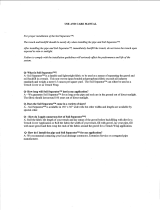 Soil Separator 36150SSF-6 User manual
Soil Separator 36150SSF-6 User manual
-
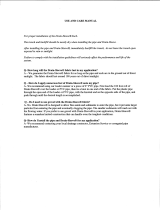 Drain-Sleeve 03010-12 User manual
Drain-Sleeve 03010-12 User manual
-
Mueller Company 015409 330N Installation guide
-
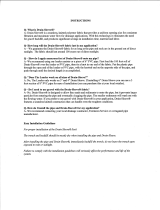 Drain-Sleeve 03010-12 Operating instructions
Drain-Sleeve 03010-12 Operating instructions
-
Mueller Company 015428 333 Installation guide
-
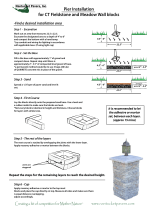 Nantucket Pavers 82102 Operating instructions
Nantucket Pavers 82102 Operating instructions
-
Mueller Company 015028 330 Installation guide
-
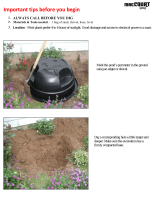 MacCourt PP3814 Installation guide
MacCourt PP3814 Installation guide





















